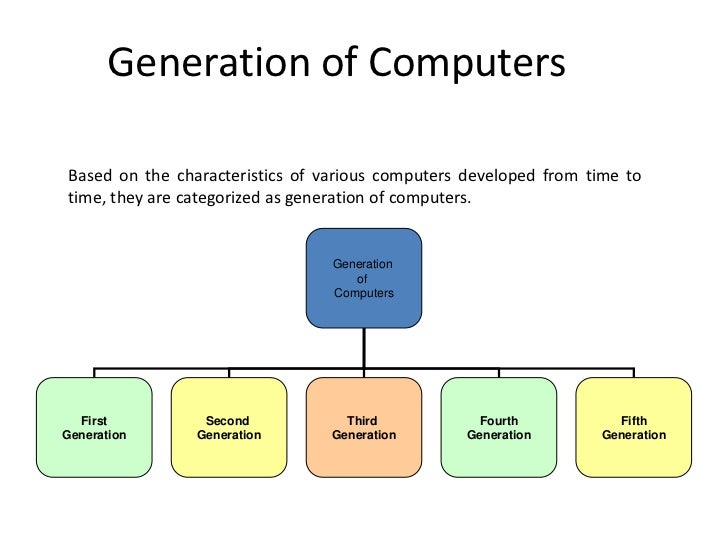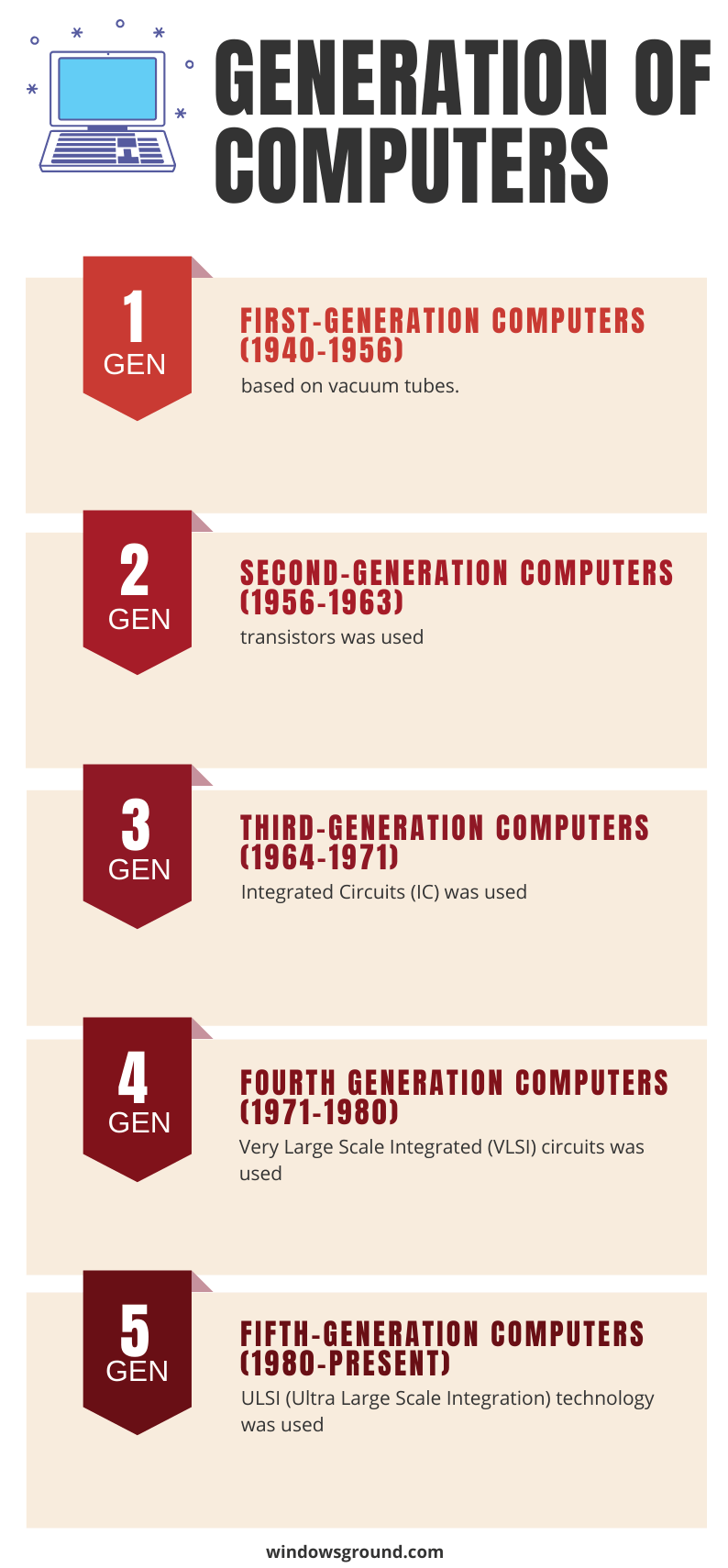



Programming language – assembly language.Memory – magnetic core and magnetic tape / disk.Second Generation of Computers The main characteristics of second generation of computers (1950s-1960s) Quantity – there were about 100 different vacuum tube computers produced between 1942 and1963.Examples – ENIAC, UNIVAC1, IBM 650, IBM 701, etc.Input/output devices – punched cards and paper tape.Speed and size – very slow and very large in size (often taking up entire room).Power – consume a lot of electricity and generate a lot of heat.Programming language – machine language.Main memory – magnetic drums and magnetic tapes.Main electronic component – vacuum tube.The main characteristics of first generation of computers (1940s-1950s) Five Generations of Computers Generations of computers The evolution of computer technology is often divided into five generations. First Generation of Computers Classification of generations of computers Memory – a physical device that is used to store data, information and program in a computer.Īrtificial intelligence (AI) – an area of computer science that deals with the simulation and creation of intelligent machines or intelligent behave in computers (they think, learn, work, and react like humans). ADD, SUB, DIV…) in place of numbers (0s and 1s). Machine language – a low-level programming language comprised of a collection of binary digits (ones and zeros) that the computer can read and understand.Īssembly language is like the machine language that a computer can understand, except that assembly language uses abbreviated words (e.g.


 0 kommentar(er)
0 kommentar(er)
